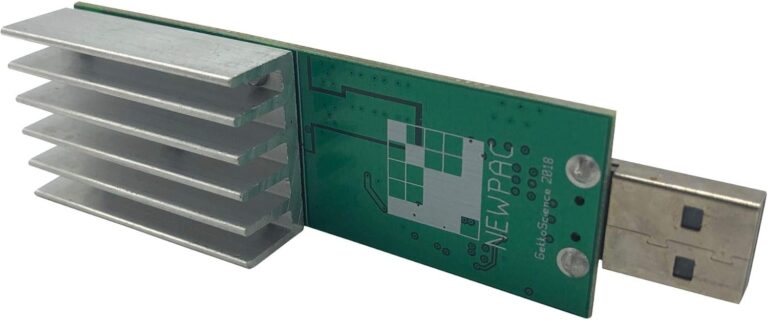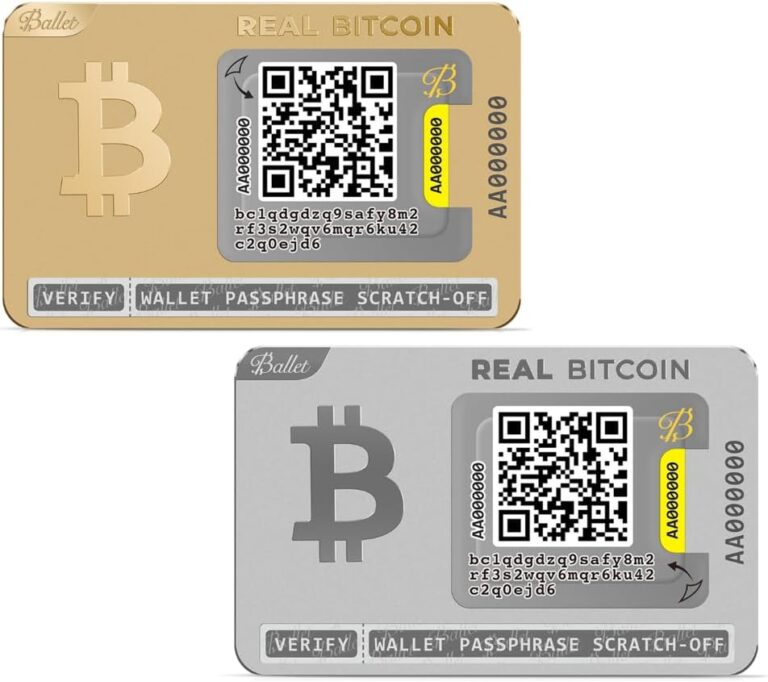What Is A Multisig Wallet?
In this article, you will learn about multisig wallets and how they work. A multisig wallet, short for multi-signature wallet, is a type of cryptocurrency wallet that requires multiple signatures to authorize a transaction. It provides an extra layer of security by involving multiple parties in the transaction process. By the end of this article, you will have a clear understanding of what a multisig wallet is and why it is beneficial for safeguarding your digital assets. A multisig wallet, also known as a multi-signature wallet, is a type of digital wallet that requires multiple signatures or approvals to authorize a transaction. In traditional cryptocurrency wallets, a single private key is used to sign transactions and gain access to funds. However, with a multisig wallet, a set number of signature holders are required to sign off on transactions before they can be executed. This added layer of security ensures that no single individual can have complete control over the wallet and its funds.
Explanation of Multisig Wallet
A multisig wallet works by utilizing public-key cryptography, which relies on a pair of cryptographic keys – a public key and a private key. The public key is used to create a unique wallet address where funds can be sent, while the private key is kept secret and is used to sign transactions. In a traditional single-signature wallet, only one private key is required to authorize a transaction. However, in a multisig wallet, multiple private keys are required.
The number of approvals required to authorize a transaction can vary depending on the setup of the multisig wallet. For example, a 2-of-3 multisig wallet would require two out of the three private key holders to sign off on transactions. This type of setup is often used for joint accounts or in business settings where multiple individuals need to authorize transactions.
How Does it Work?
To better understand how a multisig wallet works, let’s consider a practical example. Suppose you and two friends decide to create a 2-of-3 multisig wallet to store your cryptocurrency holdings. Each of you generates a unique set of public and private keys. These private keys are then distributed among the three of you so that no individual has access to all of the private keys.
When you want to initiate a transaction from the multisig wallet, you would create the transaction and sign it with your private key. However, this transaction cannot be executed until one of your friends also signs it with their private key. Once both signatures are obtained, the transaction can be broadcasted to the network and funds can be transferred.
This process provides an additional layer of security as it requires collusion or cooperation between multiple parties to authorize transactions. It reduces the risk of a single point of failure or a compromised private key leading to unauthorized access to the funds.
Importance of Multisig Wallets
Multisig wallets are becoming increasingly popular in the cryptocurrency space due to their enhanced security features. Here are some key reasons why multisig wallets are important:
Enhanced Security
One of the main advantages of using a multisig wallet is the enhanced security it provides. With the requirement of multiple signatures, it becomes much more difficult for an attacker or hacker to gain unauthorized access to the wallet and its funds. Even if one private key is compromised, the funds remain secure as the attacker would still need access to the other signatures.
Reduced Risk of Unauthorized Transactions
By requiring multiple signatures, multisig wallets greatly reduce the risk of unauthorized transactions. This is particularly important in business settings where multiple individuals are involved in financial decision-making. Each transaction must go through the appropriate approval process, ensuring that no unauthorized or malicious transactions can take place.
Protection Against Individual Key Loss
In traditional single-signature wallets, if the private key is lost or compromised, it can result in a complete loss of funds. However, with a multisig wallet, even if one private key is lost, the funds can still be accessed and managed by the remaining key holders. This provides an additional layer of protection against accidental key loss or theft.
Types of Multisig Wallets
Multisig wallets are available for various cryptocurrencies, including Bitcoin and Ethereum. Let’s explore the different types of multisig wallets available:
Bitcoin Multisig Wallets
Bitcoin was the first cryptocurrency to introduce the concept of multisig wallets. Bitcoin multisig wallets can be created using different combinations such as 2-of-2, 2-of-3, 3-of-5, and so on, depending on the desired level of security and the number of signers required.
Ethereum Multisig Wallets
Ethereum, the second-largest cryptocurrency by market capitalization, also supports multisig wallets. Ethereum multisig wallets can be created using the Ethereum Improvement Proposal (EIP) 191 standard. Similar to Bitcoin, different combinations of signatures can be used to authorize transactions.
Other Cryptocurrency Multisig Wallets
While Bitcoin and Ethereum are the most commonly known cryptocurrencies with multisig wallet support, many other cryptocurrencies also offer multisig functionality. Some notable examples include Litecoin, Bitcoin Cash, and Dash.
Setting Up a Multisig Wallet
Setting up a multisig wallet involves a few steps to ensure the proper configuration and setup. Here’s a general guide to setting up a multisig wallet:
Choosing the Right Wallet Provider
The first step in setting up a multisig wallet is to choose the right wallet provider. There are several cryptocurrency wallet providers that offer multisig functionality, so it’s important to choose a reputable and reliable provider. Look for wallets that have a user-friendly interface, good security measures, and positive reviews from other users.
Creating a Multisig Wallet
Once you’ve chosen a wallet provider, the next step is to create a multisig wallet. This typically involves creating a new wallet and selecting the multisig option during the setup process. You will need to specify the number of signatures required and The public keys of the signers.
Managing and Adding Signers
After the multisig wallet is created, you can add the signers or co-owners to the wallet. Each signer will need to provide their public key, which will be used to authorize transactions. It’s important to securely store the private keys and ensure proper communication and coordination between the signers.
Multisig Wallet Security Measures
To further enhance the security of multisig wallets, several additional measures can be taken:
Key Management
Proper key management is crucial for the security of multisig wallets. Private keys should be securely stored and protected from unauthorized access. Offline or hardware wallets are recommended for key storage to minimize the risk of online attacks.
Hardware Wallet Integration
Integrating a multisig wallet with a hardware wallet adds an extra layer of security. Hardware wallets store private keys offline on a secure device, protecting them from potential malware or hacking attempts. Using a hardware wallet as one of the required signatures can significantly enhance the security of a multisig wallet.
Multi-Factor Authentication
Enabling multi-factor authentication (MFA) for the wallet account can further safeguard against unauthorized access. MFA typically involves using a combination of something you know (password), something you have (smartphone or hardware token), or something you are (biometric data) to authenticate your identity. This provides an additional layer of protection against password theft or brute-force attacks.
Common Use Cases for Multisig Wallets
Multisig wallets have a wide range of use cases across different industries and scenarios. Here are some common examples:
Business and Corporate Accounts
Multisig wallets are particularly useful for business and corporate accounts where multiple individuals need to authorize transactions. This adds an additional layer of financial control and accountability, preventing any single individual from making unauthorized or fraudulent transactions.
Joint Accounts
In personal finance, multisig wallets can be used for joint accounts between family members or partners. Each individual can hold a private key, ensuring that transactions require the consent and approval of all parties involved.
Crowdfunding and Escrow Services
Multisig wallets are commonly used in crowdfunding and escrow services. In crowdfunding, funds can be released to the project if a certain number of backers approve the release. In escrow services, multisig wallets can be used to securely hold funds until predefined conditions are met.
Considerations Before Using a Multisig Wallet
Before utilizing a multisig wallet, there are several considerations to keep in mind:
Technical Knowledge and Expertise
Setting up and managing a multisig wallet requires a certain level of technical knowledge and expertise. It’s crucial to understand the underlying concepts of public-key cryptography and the specific functionalities and limitations of the chosen wallet provider.
Additional Fees
Using a multisig wallet may involve additional fees compared to traditional wallets. Each transaction requires multiple signatures, which may incur extra costs. It’s important to be aware of the fees associated with multisig wallets and consider them in your financial planning.
Compatibility with Exchanges and Services
Not all cryptocurrency exchanges and services support multisig wallets. Before using a multisig wallet, it’s essential to ensure compatibility with the platforms you plan to interact with. Lack of compatibility may limit your ability to trade or transact with your funds.
Limitations of Multisig Wallets
While multisig wallets provide enhanced security, there are also some limitations to consider:
Dependencies on Third Parties
Multisig wallets often rely on third-party wallet providers to operate. This introduces a degree of reliance on the provider’s infrastructure, support, and security measures. It’s crucial to choose a reputable and reliable provider to minimize the risk of service disruptions or vulnerabilities.
Potential Single Point of Failure
If all private keys of a multisig wallet are stored in a single location or by one individual, it could create a potential single point of failure. If that individual or location is compromised, it could lead to the loss of all funds. Distributed and well-secured private key storage is essential for mitigating this risk.
Inability to Recover All Funds in Case of Key Loss
In a multisig wallet, if one or more private keys are lost or inaccessible, it may result in the inability to recover all funds. The multisig configuration may require a specific number of signatures to authorize transactions, and losing one of those signatures could lead to permanent loss of access to some funds.
Alternatives to Multisig Wallets
While multisig wallets offer enhanced security, there are alternative options available:
Single-Signature Wallets
Single-signature wallets are the most straightforward type of cryptocurrency wallets, requiring only one private key to authorize transactions. While they may offer less security compared to multisig wallets, they are often easier to set up and manage, making them suitable for individuals looking for simplicity.
Hardware Wallets
Hardware wallets, such as Ledger or Trezor, are physical devices that store private keys offline. They provide a high level of security by isolating the private keys from potential online attacks or malware. Hardware wallets can be used in conjunction with multisig wallets to further enhance security.
Paper Wallets
Paper wallets involve generating and printing the private and public keys on a physical piece of paper. The paper wallet is then stored in a secure location. This method provides an offline and unhackable storage solution, but it requires caution and proper protection against physical loss or damage.
Conclusion
In summary, a multisig wallet is a type of digital wallet that requires multiple signatures to authorize transactions. It provides enhanced security, reduced risk of unauthorized transactions, and protection against individual key loss. Multisig wallets are commonly used in business settings, joint accounts, crowdfunding, and escrow services.
When setting up a multisig wallet, it’s important to choose a reputable wallet provider, create the wallet with the desired number of signatures, and properly manage and add signers. Additional security measures, such as key management, hardware wallet integration, and multi-factor authentication, can further enhance the security of multisig wallets.
However, it’s crucial to consider the technical knowledge required, potential additional fees, and compatibility with exchanges and services before utilizing a multisig wallet. Additionally, it’s important to be aware of the limitations, such as dependencies on third parties, potential single points of failure, and the inability to recover all funds in case of key loss.
Alternatives to multisig wallets include single-signature wallets, hardware wallets, and paper wallets, each with its own advantages and considerations. Overall, multisig wallets offer a robust and secure way to manage and protect cryptocurrency funds, and they are recommended for individuals and businesses looking for an extra layer of security and control in their financial transactions.






